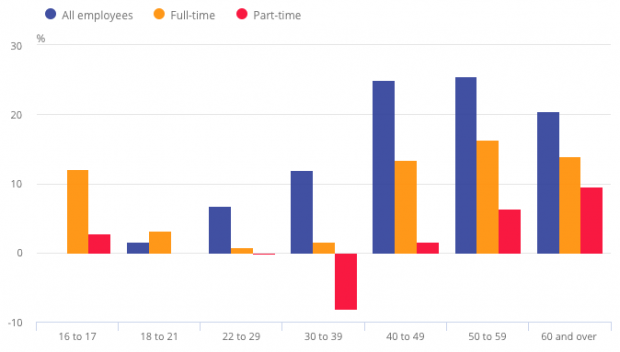It is common knowledge that girls outperform boys at school in almost every subject, and that more women than men now go to university. This trend has been going on for a long time. Women overtook men in A-level achievement in 1989, and in university graduation a few years later. The crossover in postgraduate qualifications happened in 2001.
This trend is extraordinarily uniform across the developed world, at every level of education. For example, in almost every OECD country women now graduate from college in larger numbers; in several countries, including the UK, there will shortly be two female graduates to every male if present trends continue.
So at the point of entry into the labour market, women are now significantly better qualified. Women also go on learning at a higher rate than men throughout their working lives and beyond.
Evidence from the Skills at Work survey shows that women’s skill levels have increased at a faster rate over the last 20 years or so, and where men still have higher actual levels of skills, women are catching up fast. Women are around 25% more likely to participate in job-based training (see ONS, 2017 data) and three times more likely to sign up for community learning programmes than men (see Community Learning Survey Report, 2013).
Why should this be? First, women are more likely to be employed in the public sector, which tends to offer more in the way of access to training. Secondly, women are readier to acknowledge that there are areas where they still need to learn, so their motivation is stronger. Thirdly, there is more pressure on women to demonstrate that they have the skills.
So women are accumulating significantly higher levels of human capital, in terms of qualifications and competencies. But this does not bring the material reward that might be expected. Women continue to be paid, on average, less than men. For younger workers, this gender pay gap has closed considerably, but the gap increases dramatically after the age of 40. This highlights the need to not only consider the gap in pay but also the gap in career progression.

It is this tension, between the competency gap and pay gap, that gives rise to what I have called the Paula Principle: women mostly work below their level of competence. Five broad factors underpin the Paula Principle: discrimination; caring responsibilities; lack of self-confidence; access to vertical networks; and positive choice, where women choose not to progress up the vertical ladder for good reasons of their own.
Lifelong learning and skills are necessary conditions for success; both individually and collectively. Policy-makers and employers need to ensure that progression routes adequately recognise the skills and competencies of all groups in the workforce.
If you want to learn more about the future of skills in the UK please visit the Future of skills and lifelong learning collection.